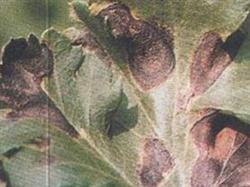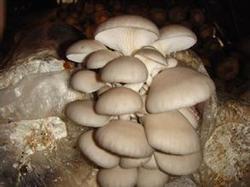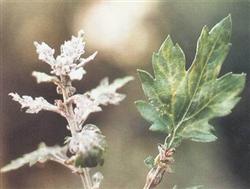Common pesticides for prevention and control of chrysanthemum diseases and insect pests

There are many diseases and insect pests in chrysanthemum, which need to be prevented. In addition to the common physical control methods, chemical control is used relatively frequently and pesticides are used accurately in order to achieve the best control effect. First, there are many diseases of chrysanthemum, which are commonly used medicine, such as sheath blight, spot blight, rust, powdery mildew, spot disease, etc., and the commonly used pesticides are Banling, chlorothalonil, encyclopedia EC, topiramine, colloidal sulfur, methomyl, carbendazim, carbendazim, and so on. Second, insect pests commonly used pesticides chrysanthemum pests are on the ground, such as aphids, thrips, leaf moths, borers and so on. The main underground insect pests are ground tiger, beetle larva and so on. Ground pests can be controlled with 20% chrysanthemum EC, dipterex, trichlorfon crystal, Xingmianbao and so on. Underground insect pests can be controlled by Shachongshuang. There are also red spiders and rusty spiders, which can be controlled by propargite, copper, Tork, diformamidine, dichlorvos and so on. Pesticides in use should pay attention to weather changes, do not spray before heavy rain and cloudy days, this weather will affect the effect of pesticide use. Generally choose sunny morning or evening.
- Prev

Two stubble noodles of Pleurotus ostreatus should be peeled.
The economic benefit of planting Pleurotus ostreatus with peanut shell is 9.67% and 21.82% higher than that of rice straw cultivation. The following links should be grasped in the process of operation. Raw material treatment and formula crush the peanut shell into small particles and set aside after exposure to the sun for 2 or 3 days. The formula is: peanut shell 90%, wheat husk or rice bran 8% lime 3%, phosphorus.
- Next

Occurrence and control of chrysanthemum powdery mildew
Powdery mildew of chrysanthemum is one of the common diseases in flowers, which is distributed in the south and north of China. Powdery mildew of chrysanthemum causes poor plant growth, withered leaves and even does not blossom, seriously affecting the effect of greening and beautification and flower production, but also harming melon leaf chrysanthemum, calendula, echinacea, African chrysanthemum, Persian chrysanthemum, emerald chrysanthemum, dahlia.
Related
- Fuxing push coffee new agricultural production and marketing class: lack of small-scale processing plants
- Jujube rice field leisure farm deep ploughing Yilan for five years to create a space for organic food and play
- Nongyu Farm-A trial of organic papaya for brave women with advanced technology
- Four points for attention in the prevention and control of diseases and insect pests of edible fungi
- How to add nutrient solution to Edible Fungi
- Is there any good way to control edible fungus mites?
- Open Inoculation Technology of Edible Fungi
- Is there any clever way to use fertilizer for edible fungus in winter?
- What agents are used to kill the pathogens of edible fungi in the mushroom shed?
- Rapid drying of Edible Fungi

